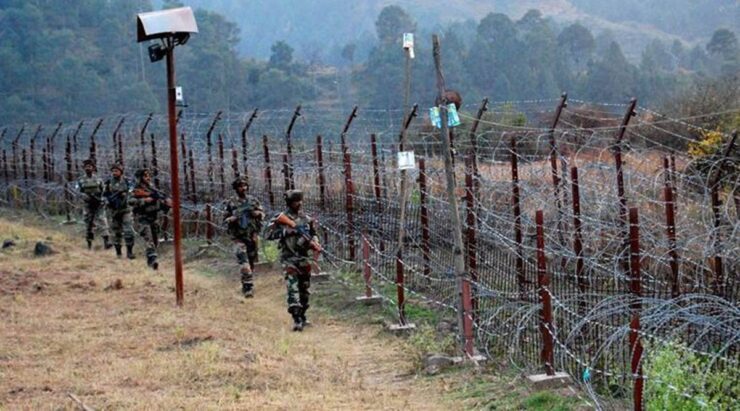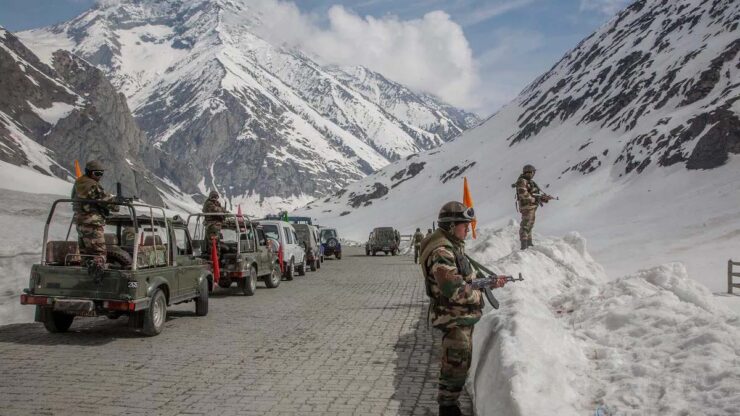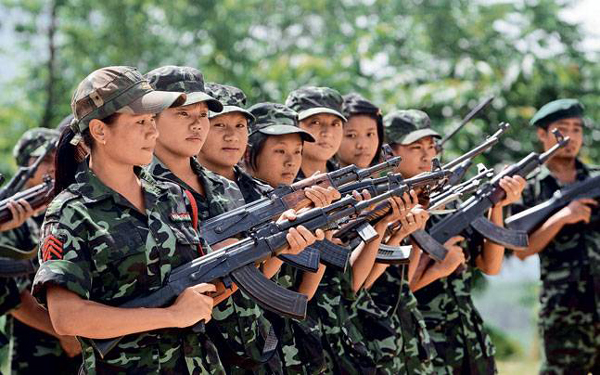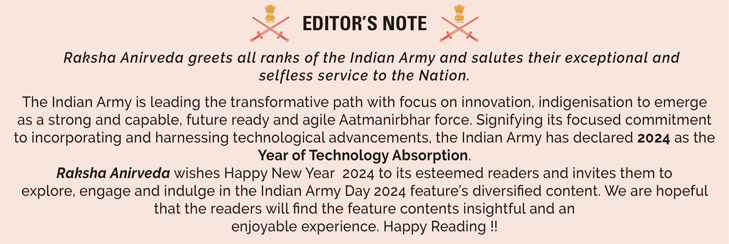
Deterrence to conflict whether at the sub-conventional level or conventional under the nuclear backdrop not only should be proactive, it must be suitably demonstrated to convey the effectiveness to the enemy.
The stark truth today is that China is our enemy number one, Pakistan is second place and both are jointly aligned against us. This equation is unlikely to change in the foreseeable future.
The thought that China will dump Pakistan one day and align with India for access to the Indian Ocean through Nepal-Kolkata is outright stupid. So is taking cover behind the slogan that we must wait till we build our military strength and economy at par with China.
Deterrence is widely defined as any use of threats (implicit or explicit) or limited force intended to dissuade the adversary from taking an action. It is unlike compellence; an attempt to force the adversary to take an action or alter the status quo.
But both deterrence and compellence are forms of coercion. Deterrence is successful when a prospective attacker believes that the probability of success is low and the costs of attack are high. But the crux of deterrence is to credibly communicate threats to the enemy. Most significantly, deterrence does NOT necessarily require military superiority.
Forget China, our deterrence against Pakistan’s proxy war is hardly credible. We went for a second ceasefire with Pakistan. The previous ceasefire agreement signed in 2004 had not been canceled but violated with Pakistan hundreds of times. Did we expect Pakistan to respect a new ceasefire?
A Pakistani terrorist recently killed in Keran sector of Kupwara in J&K Kupwara in a bid to infiltrate was identified as Mohd Shabbir Malik carrying a Pakistani national identity card, vaccination certificates and his photo in army uniform wearing name plate.
According to the advance research sheet of South Asia Terrorism Portal (SATP), in 2021, there were 312 incidents of killings in India (not J&K alone) including 93 terrorists/extremists, 115 civilians and 104 security forces. The number of terrorists in J&K may have gone down and security forces have had multiple successes in recent days but Pakistan is producing terrorists-radicals to the tune of about one million per year.
Compellence is more difficult to practice compared to deterrence but China practiced it effectively to make us withdraw from the Kailash Range our forces occupied in our own territory losing the strategic advantage we had and the only chip we had at the bargaining table.

How did China achieve this? Did it threaten us through the diplomatic or NSA channel that they would overrun our post at Finger 4 on the north bank of Pangong Tso or launch an offensive to capture our airstrip at Daulat Beg Oldi (DBO)? By then we were fully mobilized, so why did we not call the Chinese bluff? Were we scared that we will not be able to fight the PLA which in any case we will have to if conflict is thrust upon us?
The above are just two examples. China is feverishly ramping up its forces and infrastructure against India and is now building a bridge over the Pangong Tso in Khurnak which will cut down a 180-km loop from Khurnak to the southern bank of Pangong Tso through Rudok; cutting the distance Khurnak-Rudok to 40-50 km instead of some 200 km. The bridge is in Chinese territory and will be completed soon given that China is using prefabricated structures.
Our paid media is propagating that China wants to counter any Indian move to re-occupy the Kalilash Range. But the fact is that this bridge will facilitate a multi-pronged Chinese thrust along both banks of Pangong Tso? While the bridge is still under construction, we should again occupy the Kailash Range, which is in our own territory, citing the threat to our positions on the south bank of the Pangong Tso. Similarly, we need to occupy the Karakoram Pass even if it involves maintaining it by air for the time being.
Our national level deterrence towards China is running in the reverse gear even as Defence Minister Rajnath Singh has recently stated that conflict with China cannot be ruled out.
Our January-November 2021 bilateral trade with China crossed USD 100 billion (up 46.4 per cent year-on-year) with an USD 61.5 billion surplus in China’s favour. The recent ISRO-OPPO India deal would compromise data of the NavIC messaging services. And now we have exchanged greetings and sweets with the PLA at 10 places along the LAC at 10 locations including at the PLA intrusions at Bottleneck (which is 20 km inside our territory), Hot Springs and Demchok on January 1, 2022.
On the same day, China showed a ‘fake’ photo of PLA troops displaying a large Chinese flag in the Galwan Valley and Chinese state media outlets showed a ‘fake’ video of Galwan Valley with PLA troops pledging to protect “every inch” of Chinese territory. But China has in the past laid claim to entire Galwan Valley.
Are we trying to buttress Beijing so that China does not attack us during the upcoming state elections? The strategy of the Chinese Communist Party (CCP) is clearly offensive, which will not mellow with greetings and sweets.
China’s New Border Law calls upon the PLA and government agencies to safeguard sovereignty—which includes China’s illegal territorial claims which are mostly in India. Post the 13th round of Corps Commander-level talks in Eastern Ladakh, China’s Western Theatre Command re-emphasized the ‘sovereignty’ bit.
China’s new border villages in Bhutan and Arunachal Pradesh in so-called ‘disputed areas’ are forward camps for the PLA. India has rejected Beijing giving Chinese names to 14 places in Arunachal Pradesh (as it did for six places in 2017) but it reinforces CCP’s illegal claims on Arunachal Pradesh.
China, together with Pakistan, continues to support insurgencies in India and fomenting terrorism in our northeast. It is also noteworthy that as Covid cases rise, the Chinese will use the situation to their advantage.
China is fighting us on all fronts, having both communist parties of India on its side and winning the perception war by purchasing media, scholars, intelligentsia and officials, in contrast to our fractured democracy. But why we are not more vocal against China defies logic. Have we done anything ever other than reacting to the situation created by China?
The central problem of deterrence revolves around how to credibly threaten military action (implicit or explicit) punishment on the adversary despite its costs to its own side.
Also to reiterate, deterrence does not necessarily require military superiority. Take the case of Vietnam, which gave a bloody nose to China in 1979 when China invaded them to “teach Vietnam a lesson”. Xi Jinping was a secretary in China’s ministry of national defense in 1979 and will not forget that lesson in his lifetime.
Like many states, India too is moving, albeit slowly, towards military transformation; to transform their military strategies, doctrines and structures in recognition of the changing battlefield environment of the 21st century. But deterrence is an art that is receiving little focus other than verbal and media rhetoric, which has no effect on our adversaries.
Barring the defeat of East Pakistan and the Liberation of Bangladesh in 1971, Indian governments have traditionally kept the military out of strategic security formulation. One major reason is dominance of the bureaucracy in the Indian system and dependence of politicians on their advice.

Defence policy both in no-war-no-peace and war is assigned to the defence secretary heading the department of defence, which leaves the military out. The shortcomings as per a veteran-scholar are at levels—be it military leadership which doesn’t stand up, bureaucracy which plays safe, polity which doesn’t care for national efforts, presstitutes media and sold out intelligentsia.”
Clearly, we need to stand up, take some initiative and be counted rather than reacting to Chinese and Pakistani actions. We have not even defined a national security strategy (NSS) despite the NSA being tasked for it in 2019. Headquarters Integrated Defence Staff (IDS) or an independent think tank could have produced a Draft NSS in 3-4 months using the diagnostic tool of net assessment.
If we are to have credible military deterrence in place, the lead should have been taken by the Chief of Defence Staff (CDS) who was also the Permanent Chairman of Chiefs of Staff Committee (PC COSC) by presenting a plan to the government, impress upon the political authority virtues of deterrence and implement it.
We do not have a CDS presently but the Chief of Army Staff, General MM Naravane is also the PC COSC. It therefore is incumbent on him to take this initiative which is already late by many years. Unless we do so, we will remain a reactive Nation and a reactive Army.
The Army must be demonstratively proactive to establish credible deterrence against China and Pakistan. Merely having offensive plans and nuclear capability is no deterrence.
(The author is a veteran of the Indian Army. Views expressed are personal)











